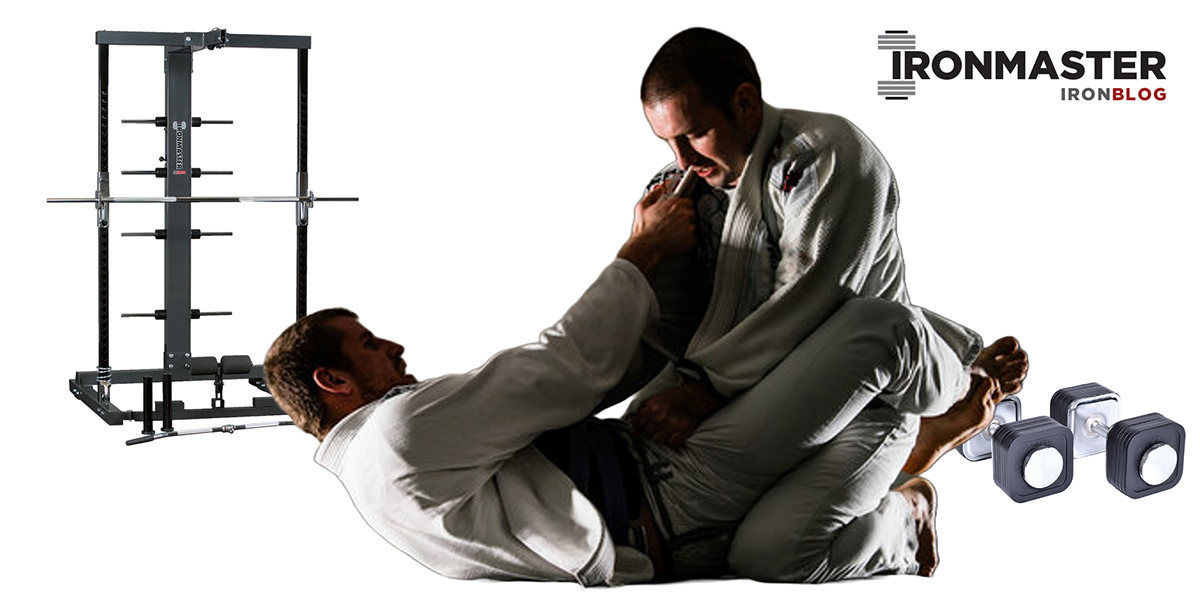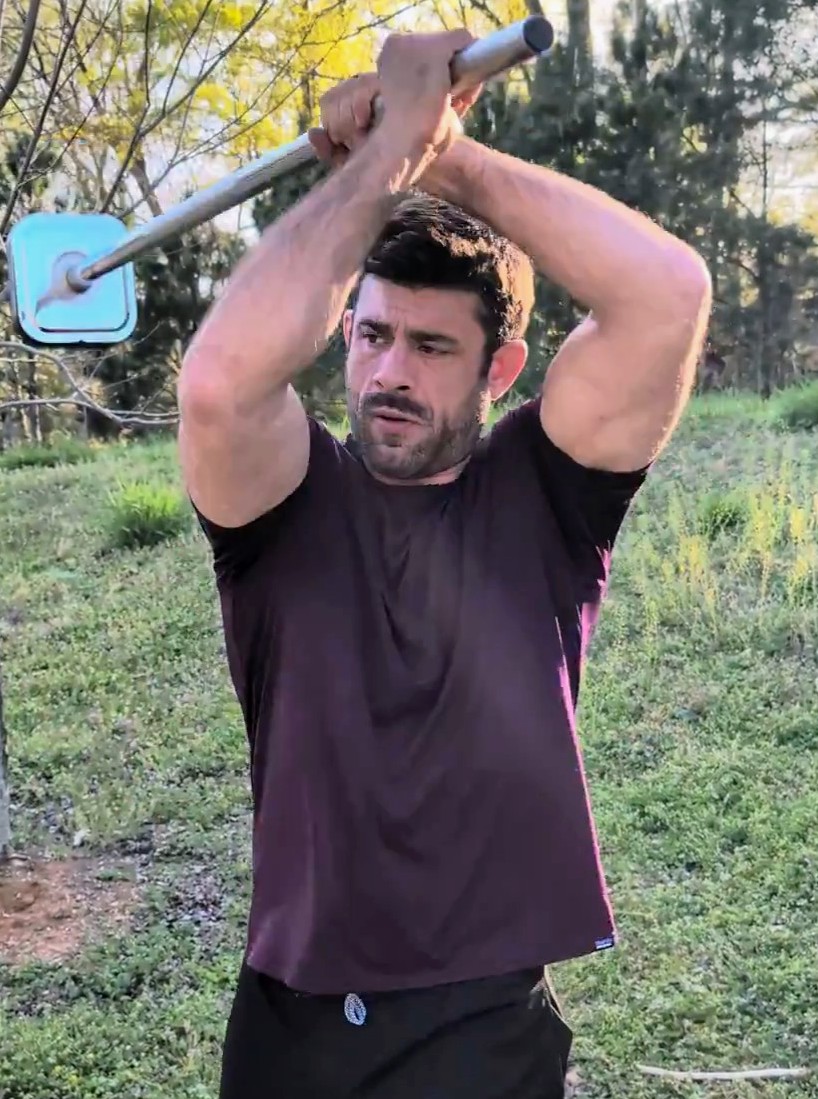Blog
Maximize Your Jiu-Jitsu Performance Through Strength Training
Enhance Your BJJ Skills with Targeted Strength Exercises in Your Home Gym

Maximize Your Jiu-Jitsu Performance Through Strength Training
Brazilian Jiu-Jitsu (BJJ) is a physically demanding sport that requires a blend of technique, leverage, and strength. While mastering intricate maneuvers is crucial, building a solid foundation of strength will significantly elevate your game on the mats. This blog post aims to guide home gym owners who are Jiu-Jitsu practitioners on how to incorporate strength training for BJJ excellence.
The Role of Strength in Jiu-Jitsu
Jiu-Jitsu constantly challenges you to hold down opponents, escape bad positions, and maneuver your body in awkward ways. Strength isn't about brute force; it's about having the ability to muster the necessary power exactly when you need it to execute a sweep, submission, or escape. The ability to apply strategic techniques is much more achievable with a strong foundation.
Strength training contributes to BJJ performance in several ways. It allows you to hit more moves more often, test your opponent's defenses, and overwhelm them with physicality. But strength training isn't just about power; it also improves your endurance to handle the rigors of rolling and recover from exertion to perform at your best throughout training or competition.
Increased Strength for Better Technique
Increased strength translates to better technique execution across the board. Guard retention, escapes, and submissions all become more achievable with a strong base. It's not that strength magically makes your techniques better, but it gives you more opportunities to attempt them. Confidence also plays a role. When you feel strong, you approach techniques with a sense of calm control, making them appear effortless.
Functional Strength for Jiu-Jitsu
There's a difference between raw strength and functional strength specific to Jiu-Jitsu. Functional strength means your movements mimic the pulling, twisting, and lunging you encounter on the mats. Linear movements can lead to injuries, so incorporating exercises like side lunges, Nordic curls, macebell swings, and Turkish Get-Ups strengthens the entire muscle group and prepares your body for the demands of Jiu-Jitsu.
Understanding Your Jiu-Jitsu Needs
Understanding the common movements and positions in Jiu-Jitsu, like hip escapes, bridges, and guard manipulation, is key to designing a strength training program that targets the right muscle groups. Your hips, core, back, and legs are constantly engaged during Jiu-Jitsu. Grip strength is also essential for controlling your opponent and finishing submissions. Don't neglect exercises that target your forearms and hands.
Balancing Strength, Flexibility, and Mobility
However, there's a delicate balance between strength, flexibility, and mobility. As you get stronger, you might gain weight and lose some flexibility. The key is to find a program that allows you to develop all these attributes simultaneously. High-level Jiu-Jitsu athletes are not only strong but also fast and flexible. In your home gym, prioritize exercises that challenge your strength while promoting mobility to prevent injuries and ensure you can move efficiently on the mats.
When designing your home gym for Jiu-Jitsu strength training, consider the equipment you'll need. You'll want to be able to perform cardiovascular exercises, lift weights safely in various directions, and have access to tools that allow you to build a well-rounded program. Free weights, kettlebells, resistance bands, and a pull-up bar are great options.
Designing Your Home Gym for Jiu-Jitsu Strength Training
Space limitations are a concern for many home gym owners. Look for adjustable weights, macebells, and kettlebells, and a good, adjustable bench to maximize your workout options. Utilize your surroundings; you can even use stairs or outdoor features to add variety to your workouts.
Key Strength Exercises for Jiu-Jitsu Athletes
There are many great strength exercises for Jiu-Jitsu athletes that target specific movements and areas. Kettlebell Turkish Get-Ups are a fantastic option as they engage multiple muscle groups and challenge your balance and core. Weighted lunges with overhead rotations, deadlifts, rows, isometric holds, and various pulling exercises all mimic movements you'll encounter during Jiu-Jitsu training.
This blog post includes sample workout routines with progressions for both beginners and advanced practitioners at the end.
Integrating Strength Training into Your Jiu-Jitsu Training Schedule
Balancing strength training with Jiu-Jitsu practice can be tricky. Here's a tip: schedule your strength training sessions on days you're not in the gym. This allows you to focus on technique and performance during Jiu-Jitsu training, while your strength workouts complement and enhance your skills. It's also important to schedule rest and recovery days to prevent injuries. Getting enough sleep, proper nutrition, and listening to your body are crucial for optimal recovery and performance.
Strength Training for Competition
Competition preparation might require slight adjustments to your training program. However, Jiu-Jitsu is a year-round sport with frequent competitions. You can design your training with competition phases in mind, but remember, Jiu-Jitsu allows for constant competition opportunities, so staying consistently strong is key.
Strength training is paramount for maximizing your Jiu-Jitsu performance. It allows you to attempt more techniques, defend yourself effectively, and ultimately, have more fun on the mats. Consistency is key. Start small, stay consistent, and gradually increase the intensity of your workouts. You'll be surprised at how much stronger you can become, and how that translates to success on the Jiu-Jitsu mats.
What's next?
There are tons of instructional resources available online and in libraries. You can find instructional videos, and articles, and even hire online coaches to guide you. Don't hesitate to ask questions and learn from experienced athletes. Remember, prioritizing your health and strength is an investment in your Jiu-Jitsu journey. You can contact me for 1x1 coaching opportunities if you're interested in learning more.
This blog post has equipped you with the knowledge to design a home gym strength training program that complements your Jiu-Jitsu practice. With dedication and consistency, you'll develop the strength and power to dominate on the mats and take your BJJ game to the next level.
Here are two separate Jiu-Jitsu-specific workout plans that incorporate kettlebells, adjustable dumbbells, pull-ups, a macebell, isometric training, and sets to failure:
Workout A: Strength and Power
- Warm-up: 5 minutes of light cardio (jumping jacks, jogging), dynamic stretches (arm circles, leg swings)
- Kettlebell Swings: 3 sets of 10 reps (heavyweight)
- Kettlebell Lunges (alternate hold each set): 3 sets of 8-12 reps (moderate weight)
- DumBbell lateral and forward hold: 3 sets of 20-second alternating holds for each arm
- Pull-ups: 3 sets to failure (assisted pull-ups if needed)
- Kettlebell Turkish Get-ups: 3 sets of 5 reps per arm (lightweight)
- Dumbbell Romanian Deadlifts: 3 sets of 10-15 reps (moderate weight)
- Isometric Plank: 3 sets of 30-60 seconds hold
Workout B: Endurance and Grip Strength
- Warm-up: 5 minutes of light cardio (jumping jacks, jogging), dynamic stretches (arm circles, leg swings)
- Jump Rope: 3 sets of 3 minutes (moderate intensity)
- Dumbbell Lunges: 3 sets of 12-15 reps per leg (lightweight)
- Kettlebell Goblet Squats: 3 sets of 15-20 reps (moderate weight)
- Macebell swings and catch: 3 sets of 8-10 reps per arm (challenging weight)
- Pull-ups (assisted if needed): 3 sets of as many reps as possible
- Suitcase Carries (with single kettlebell): 3 sets of 30-45 seconds walk
- Grip Trainer: 3 sets to failure
Rest for 60-90 seconds between sets and 2-3 minutes between exercises. Remember to prioritize proper form over lifting heavy weights. You can adjust the weight, reps, and sets based on your fitness level.
ABOUT THE AUTHOR

I'm a results-oriented leader with a passion for helping others achieve their goals. I bring a unique blend of experience from the competitive world of martial arts (Brazilian Jiu-Jitsu black belt, Judo green belt, MMA competitor) and the corporate world (successful sales leader with a district-winning team). I'm also a certified black belt competitor with the International Brazilian Jiu-Jitsu Federation (IBJJF) and a certified coach with USA Wrestling who enjoys instilling a growth mindset in my clients.
When I'm not helping my clients win, I'm on the mats myself, training and teaching at Triangle Jiu-Jitsu in Durham, NC. A proud husband and father of four, I find inspiration in my amazing wife, a fellow athlete who competes in Jiu-Jitsu and more. Time management is one of my superpowers, and I love showing others how to achieve their goals while maintaining a balanced life.
If you're looking to learn from someone who understands the importance of hard work, dedication, and learning to win, let's chat. Connect with Rodrick here.

------------
Looking for the best home gym equipment? Ironmaster has been producing customer-driven equipment with a priority on space efficiency, quality, and affordability since 1978. Get started with our legendary adjustable weight bench, the Super Bench, or our best-in-class Quick-Lock Adjustable Dumbbells. Be an IRONMASTER, learn more at www.ironmaster.com!
Product in this article:
- Quick-Lock Mace Handle: https://www.ironmaster.com/products/quick-lock-mace-handle/
- Quick-Lock Adjustable Kettlebell: https://www.ironmaster.com/products/quick-lock-adjustable-ke...
- Quick-Lock Adjustable Dumbbells: https://www.ironmaster.com/products/quick-lock-adjustable-du...

No Comments Yet